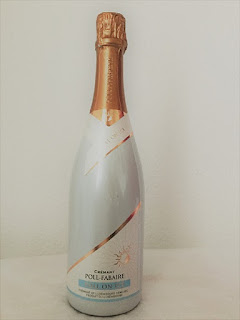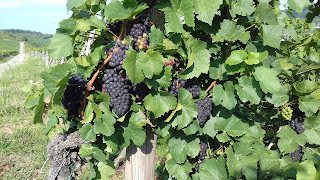Should we pay more for similar quality?

If home-grown grapes are being used to produce sparkling wine in several European countries through a specified method, why does Champagne cost more? Some factors that have been attributed to this significantly higher cost of champagne are the harsher growing climate of grapes in the Champagne region of Northern France. This makes for more laborious cultivation hence higher prices. Expertise and established valuable brand identity have also been quoted as factors relating to the high price on Champagne.
Despite these challenges, all of
the hype and associated bourgeois, the Champagne region and its wine houses are adapting their business models to a new generation of consumer behaviour! As
other sparkling wine producers in Europe begin to expand on the varieties of
grapes types they grow, the possibilities to introduce new splendid alternatives
increase. On the wine growing region of Luxembourg, the Moselle region,
producers have added such varieties as Chardonnay, Auxerrois, Pinot Blanc/Noir
to their traditional Rivaner and Elbling.
Like the Champagne region, the
German, Italian or Spanish wine producing regions all have their own climate
challenges, soil composition and jaggered terrain making for riskier harvesting.
Many producers in these countries follow the Method Traditionalle or Method
Champenoise to make sparkling wines like Crémant, Sekt or Cava. This method
requires that rigorous procedures are followed including a minimum secondary fermentation
period of at least nine months. The same method implored by Champagne makers.

As consumer behaviour evolve,
people celebrate more often and look for affordable alternative drink, not just
for special occasions. A delicious bubbly that could go with a meal, an aperitif
or just be! A leading Champagne producing house, Moët
& Chandon,
acknowledges this market trend and is now
focusing on emerging markets. Pierre-Louis
Araud, Global Brand Ambassador for Moët & Chandon,
stated in a recent interview, that Nigeria, a West-African country, is the
biggest market for the Luxury drink.
When
consumers are able to savour the quality of a good drink which matches with
its price tag, the notion of exclusivity, pride and prestige associated with Champagne
begins to disseminate. No region or producer could ever match the priceless expertise
that Champagne has garnered over several centuries (since early 18th century).
Producers from Luxembourg (Crémant de Luxembourg), Germany (Sekt) or Spain
(Cava), are however giving the producers from the North of France a run for
their money.
To learn more about Crémant de Luxembourg, just send us an email. Don't forget to like and share this write-up.



Comments
Post a Comment